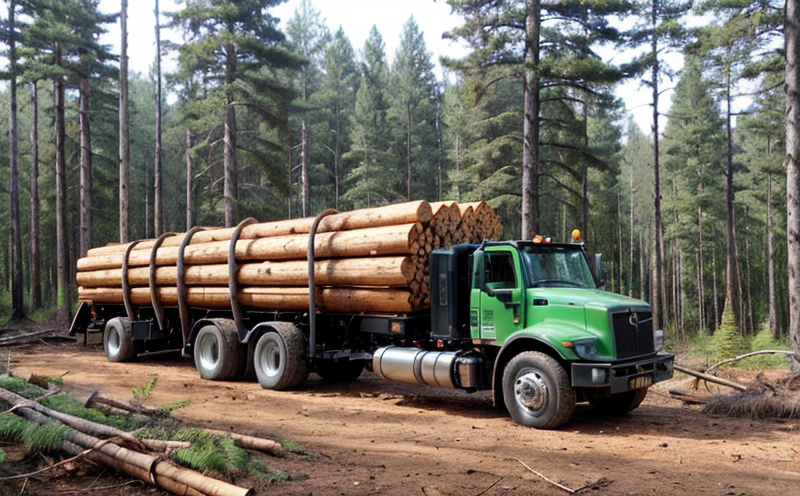Timber Fastener Holding Capacity Testing
In the realm of forestry products testing, timber fastener holding capacity plays a crucial role in ensuring structural integrity and durability. This test evaluates how well a fastener can resist withdrawal forces without breaking or failing, which is essential for applications such as wood-to-wood connections, wood-to-concrete bonds, and engineered wood joints.
The test involves subjecting the fastener to axial tensile loads until failure occurs. The holding capacity is measured in units of force (typically Newtons or Pounds). This information is vital for engineers designing structures that rely on these connections, such as bridges, buildings, and furniture.
Given its importance, it’s crucial to follow standardized procedures to ensure accurate results. Tests are typically conducted using specialized equipment designed to apply controlled loads in a consistent manner. The test setup includes the fastener being embedded into a standard specimen of wood, which is then subjected to a pulling force until failure.
The type of timber and the specific properties (such as grain orientation, moisture content) can significantly influence the holding capacity results. Therefore, it's important that samples are prepared according to specified guidelines provided by relevant standards. For instance, ASTM D1434 specifies the procedure for determining the tensile strength of wood fasteners.
| Standard | Description |
|---|---|
| ASTM D1434-20 | Tensile strength of wood fasteners in shear. |
| ISO 1194:2015 | Fasteners for timber construction - Determination of tensile load capacity. |
The results from this test are critical inputs in the design and quality control processes. They help manufacturers ensure that their fasteners meet or exceed industry standards, thus enhancing product reliability and safety. For quality managers and compliance officers, these tests provide a means to verify that products comply with regulatory requirements.
Engineers responsible for R&D can use this data to innovate and improve the performance of new fastener designs. Additionally, procurement teams benefit from this testing as it allows them to source high-quality materials confidently.
Applied Standards
| Standard | Description |
|---|---|
| ASTM D1434-20 | Tensile strength of wood fasteners in shear. |
| ISO 1194:2015 | Fasteners for timber construction - Determination of tensile load capacity. |
Quality and Reliability Assurance
The quality and reliability assurance processes in timber fastener holding capacity testing are critical to ensuring that the results meet or exceed specified standards. This involves a series of steps from specimen preparation to data analysis.
- Specimen Preparation: Specimens must be cut according to the specified dimensions and orientation to ensure consistency in testing. Moisture content is controlled to avoid variability due to environmental factors.
- Load Application: The loading device must apply forces uniformly, with a consistent rate of load increase to prevent premature failure or inaccuracies.
- Data Collection: All data points are recorded meticulously. This includes the peak force at which failure occurs and any secondary data such as strain rates.
The testing facility must maintain stringent quality control measures, including regular calibration of equipment to ensure accuracy and precision. Additionally, personnel handling these tests undergo rigorous training to adhere to best practices.
Customer Impact and Satisfaction
- Enhanced Product Reliability: By ensuring that the fasteners meet or exceed holding capacity standards, we enhance product reliability and safety.
- Regulatory Compliance: Our tests help companies comply with relevant regulations and industry standards, avoiding potential legal issues.
- Innovation Support: Engineers can use our testing data to innovate and improve the performance of new fastener designs.
- Sourcing Confidence: Procurement teams benefit from this testing as it allows them to source high-quality materials confidently.





